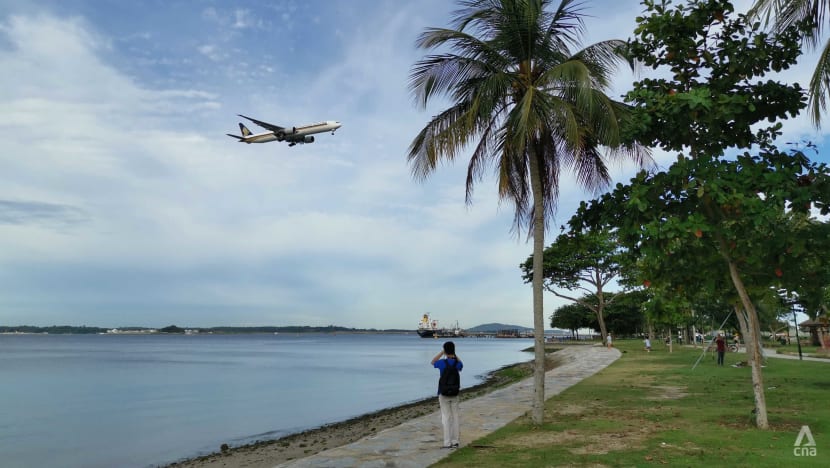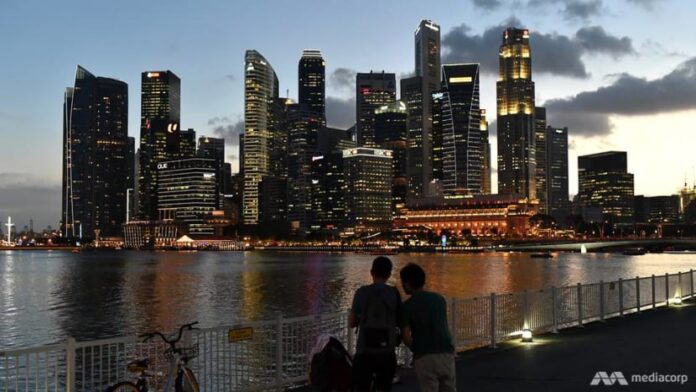Singapore: As the country continues to transition to coexist with COVID-19, Singapore has begun to reopen its borders to travelers.
Travellers from more countries can now provide their home notifications at their place of residence instead of hotels, and travelers from selected countries can enter Singapore through the quarantine-free Vaccination Travel Gateway (VTL).
Three other VTLs will be opened in the next few days. The following is the information that foreign tourists need to know when entering Singapore through the quarantine-free arrangement.
WHO CAN TRAVEL TO SINGAPORE THROUGH VTL?
As of October 28, Singapore has announced the establishment of VTLs with 13 countries/regions. Passengers must enter Singapore through a dedicated flight.
They must be vaccinated under the emergency use list of the World Health Organization at least two weeks before arriving in Singapore. If applicable, they must also reach the minimum dose interval for the vaccine.
Children aged 12 and under who have not been vaccinated during the calendar year can travel to Singapore through the VTL, provided they are accompanied by a fully vaccinated passenger.

Tourist routes with Brunei, Canada, Denmark, France, Germany, Italy, the Netherlands, Spain, the United Kingdom and the United States have been opened. The program will be extended to Australia and Switzerland on November 8th, and to South Korea on November 15th.
For Australia, due to the country’s current border measures, two-way travel was initially only applicable to fully vaccinated Australian citizens, permanent residents and their immediate family members.
According to the VTL program, travelers must stay in one or more VTL countries in the last 14 days before travelling to Singapore.
In Singapore, residents use TraceTogether or HealthHub apps to prove their vaccination status, so it is very important for tourists to obtain their vaccination records on either of these two apps.
HOW CAN I PROVE MY VACCINATION STATUS?
In Singapore, residents use TraceTogether or HealthHub apps to prove their vaccination status, so it is very important for tourists to obtain their vaccination records on either of these two apps.
For this reason, travelers should show proof of vaccination to an officer of the Immigration and Checkpoints Agency (ICA) upon arrival.
The vaccination certificate should be in the form of the original vaccination document, clearly stating the type of vaccination and the date of vaccination. Documents must be in English or translated into English by a translation service provider, embassy or notary public.
After verification, their vaccination records will be electronically reflected in TraceTogether or HealthHub.
Since TraceTogether is a contact tracking application in Singapore, travelers must download and register with their passport number.
The application will allow visitors to enter hotels, shopping malls, restaurants and attractions and other places-or any place that is subject to Singapore’s differentiated safety management measures for vaccination.
Please note that the vaccination status granted to visitors is only valid for 30 days.
Travelers who need to be vaccinated for more than 30 days can go to a private healthcare provider or public health preparation clinic for serological testing. If the serological test results are positive, the traveler’s vaccination record will be added to the National Immunization Registry and they will retain their vaccination status.

WHAT ELSE MUST BE DONE BEFORE DEPARTURE?
Short-term visitors and long-term pass holders to Singapore must apply for a vaccinated travel pass (VTP) 7 to 60 days before they plan to enter the country.
Passengers who need a visa to enter Singapore must apply in advance.
All short-term visitors to Singapore via VTL must purchase travel insurance, with a minimum of S$30,000 for COVID-19 related medical expenses. You can purchase insurance from an insurance company in Singapore or overseas.
Although VTL passengers do not need to be quarantined in Singapore, they still have to wait for the results of the polymerase chain reaction (PCR) test on arrival before they can conduct activities in Singapore.
Therefore, travelers must obtain self-isolated accommodation in Singapore to wait for the results, and they should receive the results within 24 hours. This type of accommodation can be a residence, a hotel or a serviced apartment.
Passengers should register and prepay for COVID-19 PCR testing on arrival. If not, they will have to pay for the test on arrival and may face delays in testing and leaving the airport.
Within three days before arriving in Singapore, passengers should submit the SG Arrival Card and attach their pre-travel health and travel history statement.
Except for passengers aged two and under, all passengers must undergo a pre-departure PCR test within 48 hours before departing for Singapore. The test must be carried out in an approved or authorized testing organization in the country of departure.
The test report must be in English or accompanied by an English translation; include the traveler’s name and their date of birth or passport number; and show the time and date of the test, the name of the testing organization, and the test result is negative.
Travelers should postpone their travel if they develop symptoms of COVID-19 or are diagnosed or suspected of having COVID-19 in the last 14 days before travelling to Singapore.
They should also postpone their travel if they have had close contact with a COVID-19 positive patient in the last 10 days before travelling to Singapore.
WHAT SHOULD I DO AFTER ARRIVING IN SINGAPORE?
After completing the immigration procedures, passengers must take private transportation, taxi or private car directly to their self-isolation residence. They are not allowed to use public transportation.
Passengers can leave the self-isolated residence only after receiving a negative PCR test result. They will be notified by phone or email, and they will be able to view their results on the TraceTogether app.
If travelers test positive for COVID-19, they will have to receive treatment. The current medical expenses will apply.
WHAT CAN I DO IN SINGAPORE?
There are no restrictions on their itinerary in Singapore, but travelers must comply with current COVID-19 safety management measures.
In the current stable phase, social gatherings are limited to groups of two and are expected to last until November 21. The two-person rule also applies to dining in restaurants and outdoor activities.
People should limit themselves to one social gathering a day.
A maximum of two independent visitors are allowed to visit a family every day.
If all attendees are vaccinated, up to 1,000 people are currently allowed to participate in live performances, MICE events and sports events.
Attractions, performances, cruise ships and museums currently operate at 50% capacity. The maximum number of people traveling by means of transportation such as duck trip is 50 people, and the maximum number of people traveling by non-transport means is 20 people.
For more information on travelling to Singapore via VTL, please visit the ICA website.






